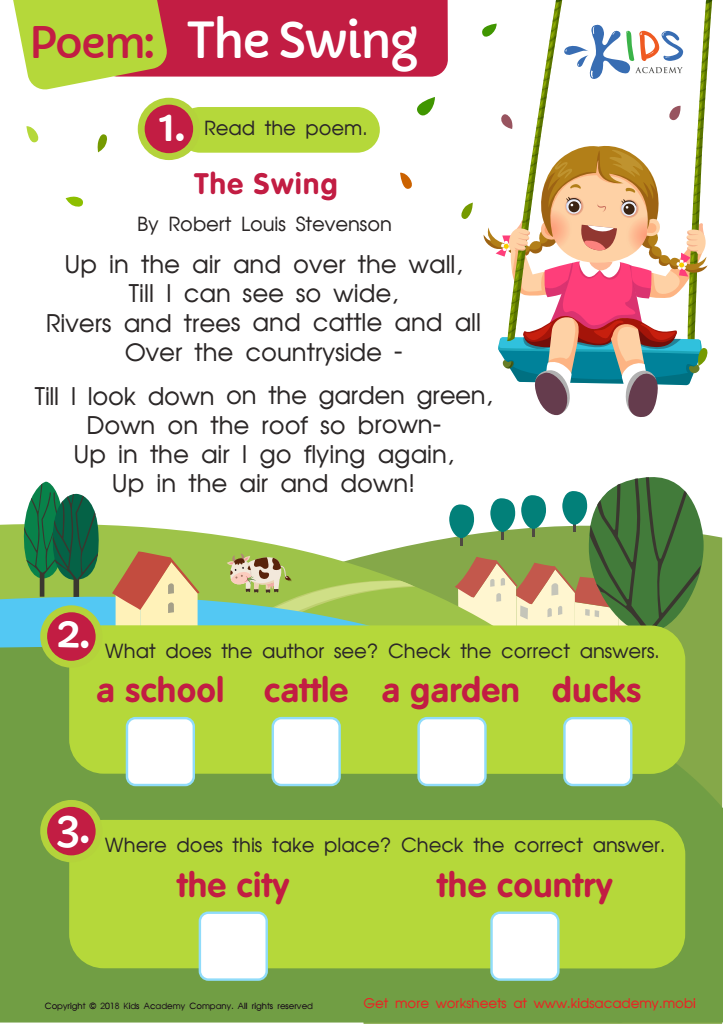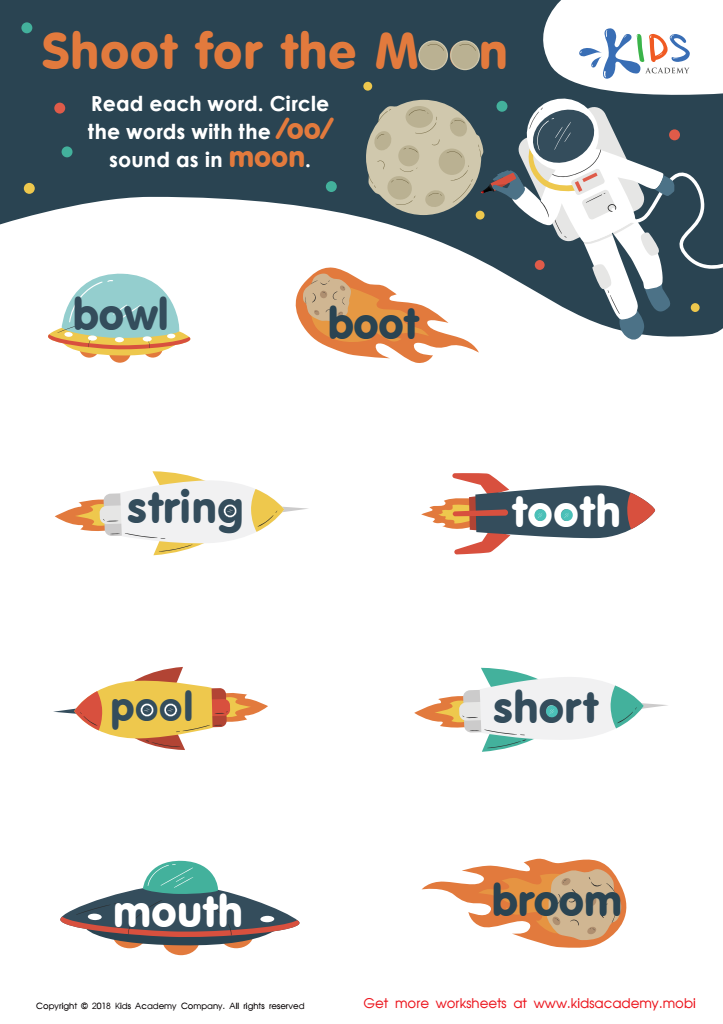Understanding metaphors Worksheets for Kids
2 filtered results
-
From - To


Poem: The Swing Worksheet


Reading: Shoot for the Moon Worksheet
Question/Answer
Why is the Understanding metaphors skill important for Grade 3 students?
Understanding metaphors is important for Grade 3 students because it enhances their reading comprehension, boosts creative thinking, and improves their ability to communicate more vividly. Metaphors help them grasp complex ideas by relating them to familiar concepts, enriching their language skills and enabling them to appreciate the nuances in literature and everyday communication.
How to train the Understanding metaphors skill in Grade 3 students learning about Reading Fiction?
To train Grade 3 students in understanding metaphors in reading fiction, introduce them to simple metaphors in familiar contexts. Use visual aids to illustrate how metaphors compare two things without using "like" or "as." Practice by reading stories or poems containing metaphors, and encourage students to identify and explain the metaphors they find. Reinforce learning through metaphor creation activities.
How to test a Grade 3 student’s Understanding metaphors skills?
To test a Grade 3 student's understanding of metaphors, provide them with simple sentences containing metaphors and ask them to explain what each metaphor means in the context. For example, present a sentence like "The classroom was a zoo," and ask what this metaphor suggests about the classroom. This approach assesses their ability to interpret metaphorical language and infer meaning.
 Assign to the classroom
Assign to the classroom












